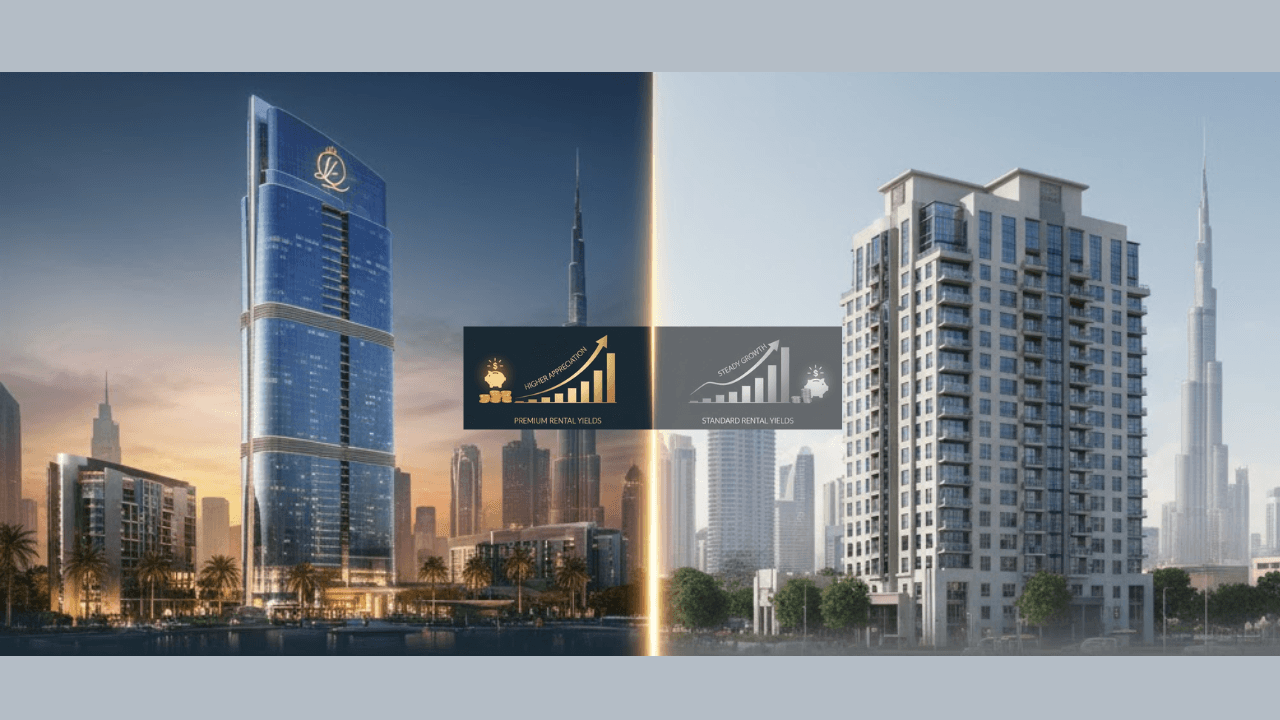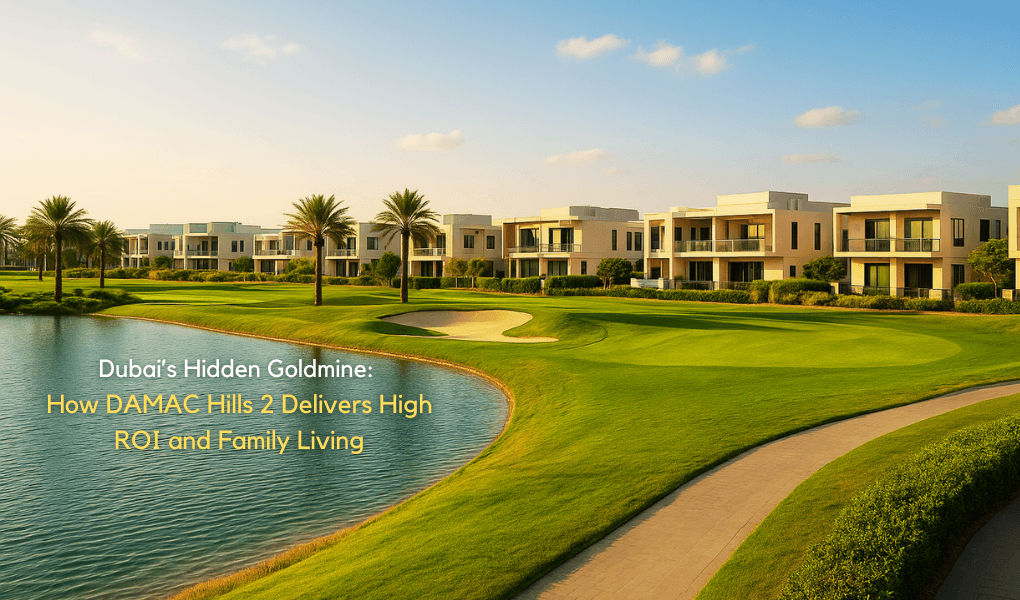
Branded vs Normal (Non-Branded) Properties in Dubai
Discover the ultimate guide to branded vs non-branded properties in Dubai. Compare ROI, rental yields, resale potential, and luxury investment opportunities.
DSC is a master-planned community in Dubai combining sports facilities, residential buildings (apartments, villas, townhouses), and amenities.
It’s a freehold zone, meaning foreigners can own property (subject to regulations).
As a themed development, it tends to attract people who like active lifestyles, sports, and related amenities in their living environment.
“EOI” usually stands for Expression of Interest. In the context of property:
It’s a preliminary step where an investor or buyer indicates interest in a property/project (rather than immediately making a binding purchase).
In off-plan or new development projects, developers might invite EOIs, collect them, and then later issue formal offers or sales contracts.
An EOI often doesn’t require full payment, but may require a small reservation deposit or refundable amount.
It helps the developer gauge demand, finalize designs, or allocate units.
For you as an investor, submitting an EOI is a low-commitment way to secure a chance to purchase before public launch, possibly at better pricing or unit selection.
If you tell me which developer or which “Sport City” you refer to, I can check their EOI requirements.
When evaluating an investment, you should consider both gross ROI and net ROI:
Gross ROI = (Annual rental income) ÷ (Purchase price) × 100
Net ROI = (Rental income − all operating costs) ÷ (Purchase price) × 100
Costs to subtract in net ROI include:
Service charges / maintenance
Property management fees
Vacancies (periods without tenant)
Repairs, insurance, furnishing costs
If financed, interest on mortgage
Other fees (agent commissions, legal, marketing)
Because of these costs, net yield often ends up materially lower than gross yield.
Based on recent market data:
Many sources estimate that apartments in DSC offer yields in the 6% to 8% range (gross) depending on unit type, location, and developer.
For example, one article states DSC’s ROI ranges between 6.12% and 8.31% for different buildings.
Another says that average returns for DSC property in 2025 are ~8%.
A more conservative estimate is ~6% average ROI for DSC in one ROI-focused listing.
Some property guides also suggest that in DSC, studio, 1-, 2-, 3-bedroom apartments yield around 6–7% depending on the unit.
So as an investor, you might aim for gross yield ~6–8% (depending on how good the unit is) and expect net yield to be lower after costs.
To maximize returns and reduce risk, focus on:
Unit type & size
Smaller units (studios / 1-bed) often have higher yield per square foot because they are more affordable to many tenants and lower cost to maintain.
Larger units or villas may have lower yield percentage but higher absolute rent and potentially better capital appreciation.
Location in the community & view
Units with good views (canal, park, greenery), near amenities or less noise, tend to command higher rent and better resale.
Developer reputation & quality
A well-known developer with track record reduces risks of delays, poor finishing, or buyer issues.
Amenities & finishing / furnishing
Fully furnished, high-spec units with access to gyms, pools, security, etc., tend to attract higher rent.
Service charges & maintenance costs
These greatly reduce net ROI. Make sure to check historical service charge trends.
Vacancy / tenancy risk & demand
The more demand (for rentals) in your target submarket, the lower the vacancy risk.
Capital appreciation potential
Over time, the value of the property may rise due to infrastructure, development, or city growth.
Entry price / purchase discounts / EOI benefits
If you can get favorable entry (e.g. pre-launch, lower interest, payment plan), your effective yield and IRR improves.
Example Estimate
Suppose:
You buy a 1-bedroom apartment in DSC for AED 700,000
You rent it out for AED 50,000 annually
Gross yield = 50,000 / 700,000 = 7.14%
Suppose annual costs (service charge, maintenance, management, vacancy) = AED 10,000
Net income = 50,000 − 10,000 = AED 40,000
Net yield = 40,000 / 700,000 = 5.71%
If over time the property appreciates, your total return (rent + appreciation) could be higher.
Market cycles: property values in Dubai can be volatile in boom / correction cycles
Developer delays (especially for off-plan projects)
Increasing service and maintenance charges
Legislative / regulatory changes (fees, restrictions)
Tenant problems or prolonged vacancy
Oversupply in certain submarkets diluting rental demand

Discover the ultimate guide to branded vs non-branded properties in Dubai. Compare ROI, rental yields, resale potential, and luxury investment opportunities.

DAMAC Hills 2 (formerly Akoya) is one of Dubai’s most affordable and fast-growing master communities, offering villas, townhouses, and apartments surrounded by lakes, parks, and family amenities. With average ROI up to 7% and long-term capital growth potential, it’s a top choice for both investors and first-time buyers seeking lifestyle and value in Dubai’s real estate market.

Dubai Silicon Oasis (DSO) is one of Dubai’s most attractive mixed-use communities, offering a blend of residential, commercial, and tech-focused developments. In 2025, DSO continues to draw investors with strong rental yields averaging 6%–9%, particularly for studio and 1-bedroom apartments, which deliver some of the highest ROI in the area.
Get in touch with our expert team and let us help you find the perfect property in Dubai. We're here to guide you through every step of your real estate journey.